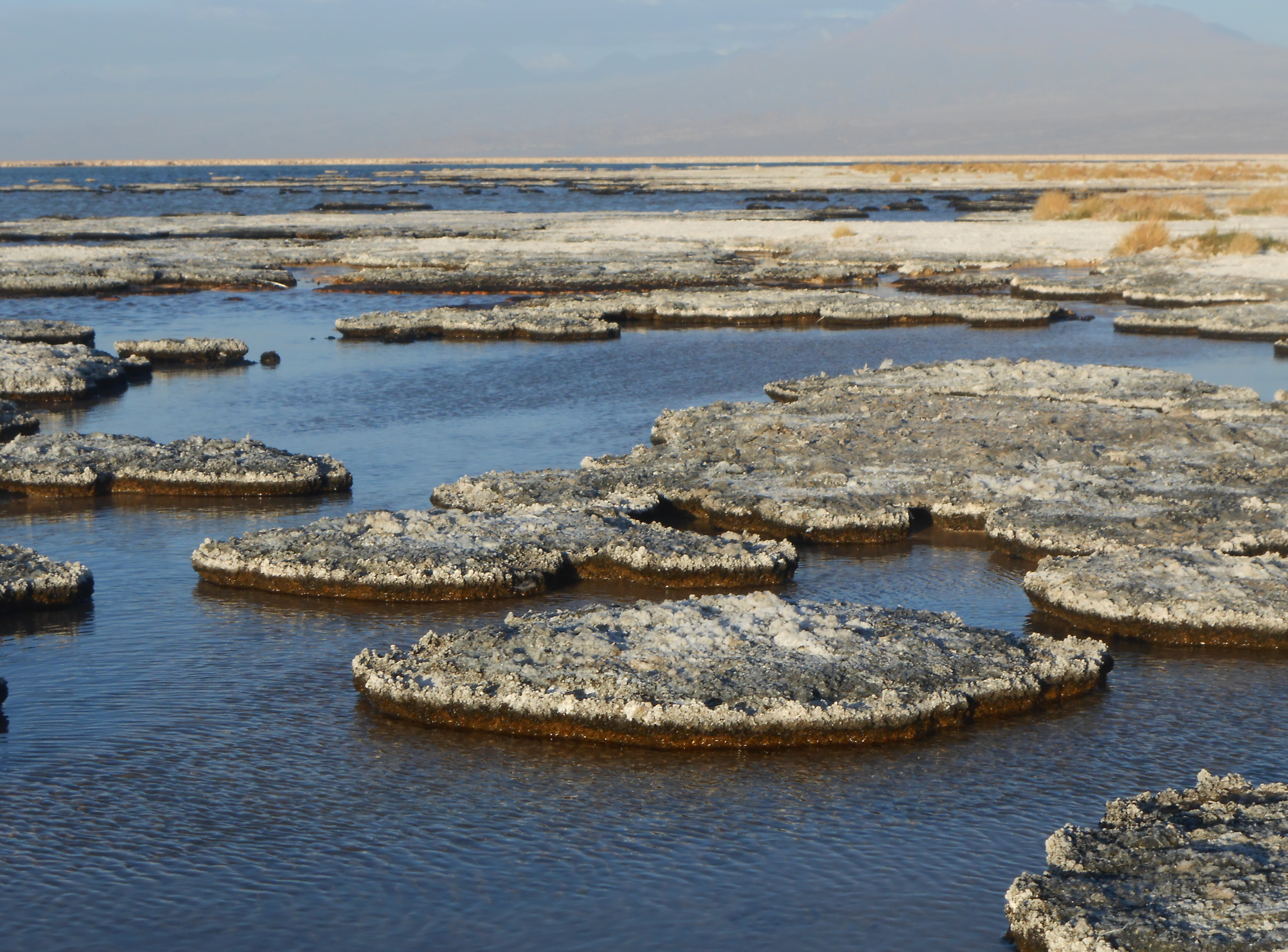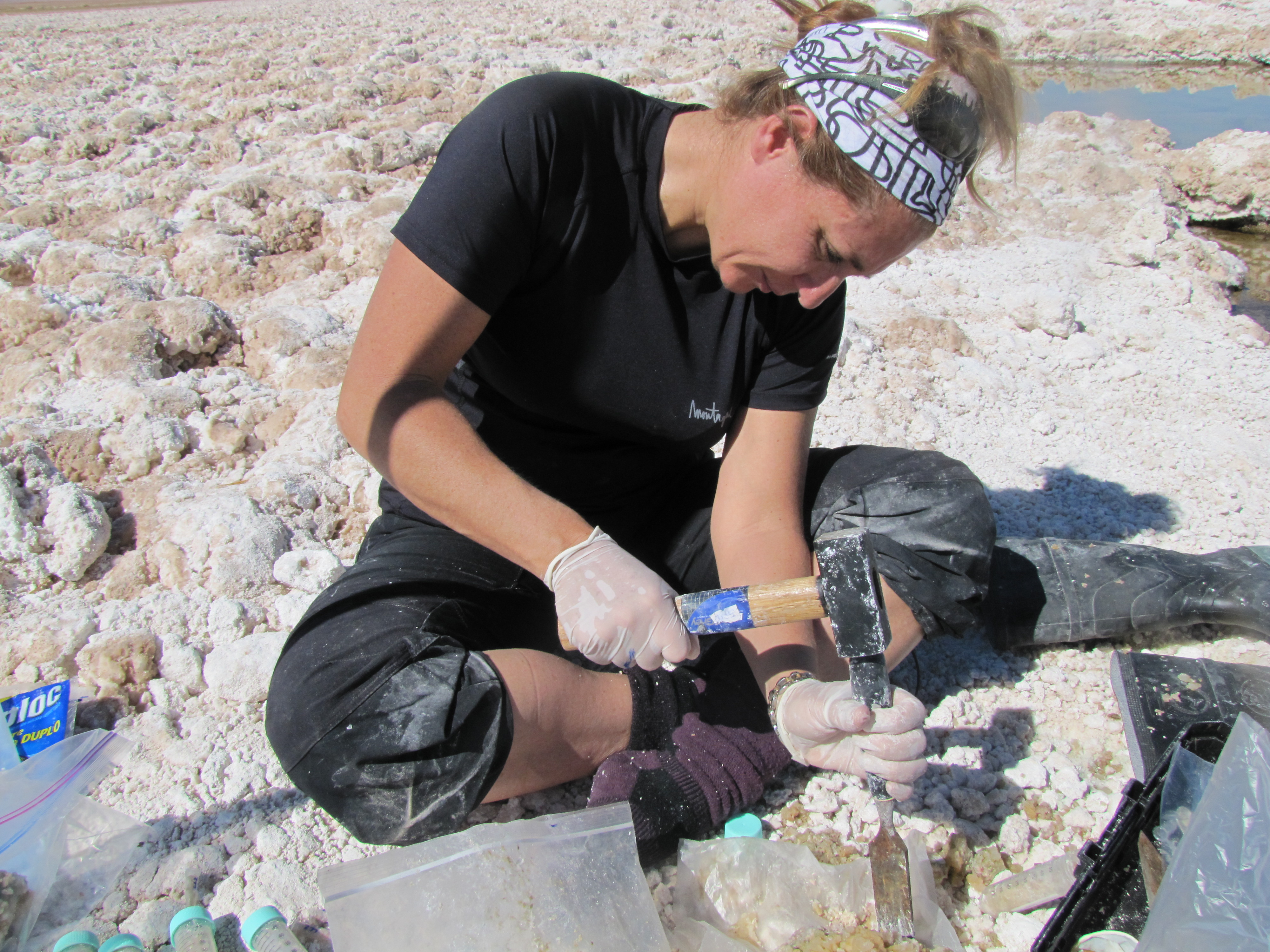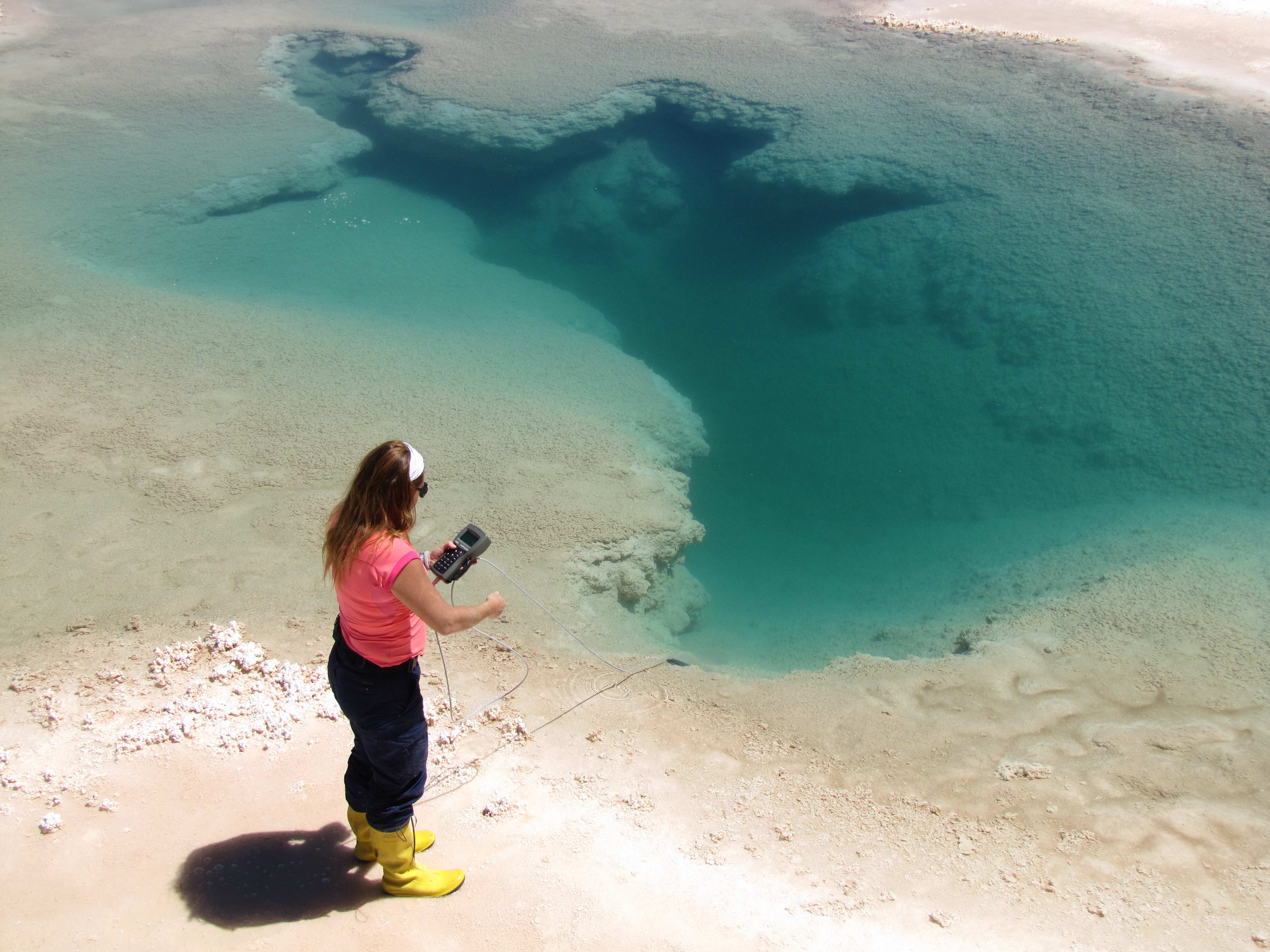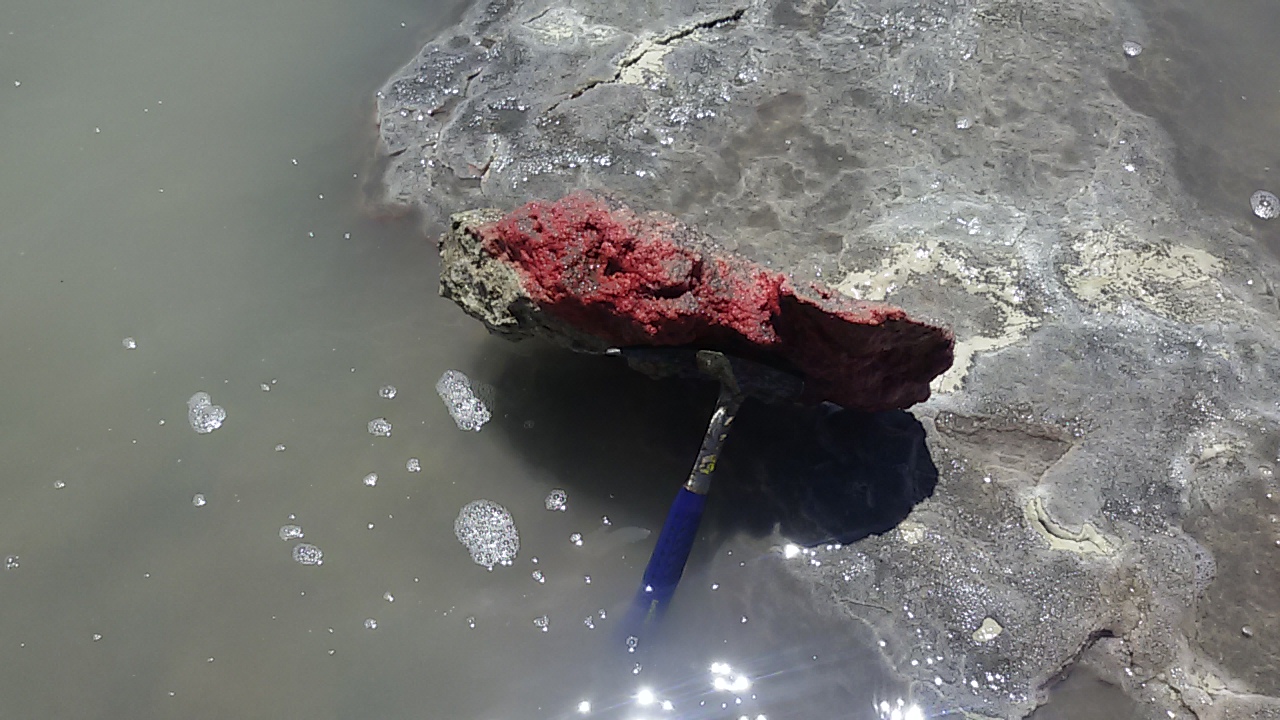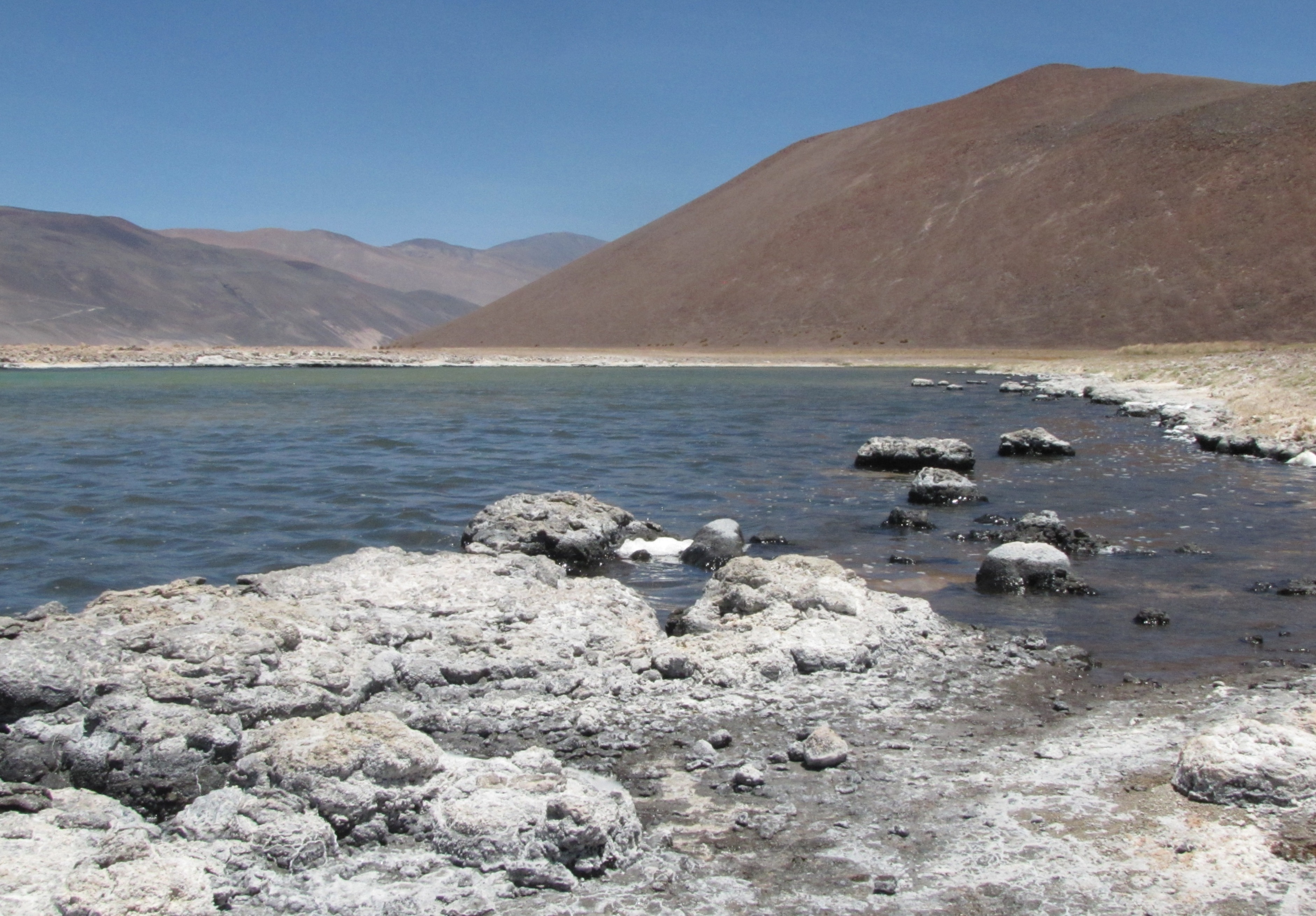Saline high mountain lakes received a lot of attention in recent years. We ask Maria Eugenia Farias from Argentina who co-authored a series of publications on this topic to answer several questions about research at high mountain lakes.
What is your main motivation to study high mountain lakes?
High Andean Mountain lakes are a unique extreme environment all over the world since their locations are in high altitude saline deserts, largely influenced by volcanic activity. UV radiation, arsenic content, high salinity, and low dissolved oxygen content, together with extreme daily temperature fluctuations and oligotrophic conditions, shape up an environment that recreates the early earth and, even more, the extraterrestrial conditions. The discovery of living microbialites and microbial mats in 2009 has increased the interest in this area as an early earth counterpart. Since then, and up to now, we have started a prospection for this kind of environments in Argentina, Chile and Bolivia. We have prospected around 60 lakes and salt flats, out of which, about 30% harbor any kind of these ecosystems (microbialites, mats and endoevaporitic domes).

Different microbialites found at the high-altitude Andean lakes depicted at different levels of analyses: on-site, macroscopic and microscopic. 1. Halite. 2. Bacteria bind by EPS. 3. Microcoleus filaments. 4. Aragonite. 5. Diatomeas frustules. 6. Gaylussite crystals. 7. Archaea bind by EPS. Picture from Photochemistry and Photobiology, 2016, 92: 14–28
There are two major hot ideas that stimulate this type of research – the model of ancient life on earth and the model of extraterrestrial life – how far these assumptions from real life?
Both are suggestive ideas. The discoveries of liquid water on Mars brines enlarge the interest in Andean brines, since they are unique thalassic environment over 4,000 m above sea level with high UV incidence, low atmospheric pressure, and temperatures under 40 degrees centigrade. Microbial life, dominated by Archaeans, flourish in these conditions producing methane or respiring arsenic. Even more, we have found perchlorate metabolism in Atacama salt flats; this pathway could be an alternative for obtaining redox capacity in brines systems, like Mars, for example (this research was carried out in collaboration with Dr Manuel Contreras, from Chile, and Dr Pieter Visscher, from USA).
In the case of early life, we do know that relict genes (relict, an organism that has survived from a primitive form), dating as far back as LUCA (Last Unique Common Ancestor), are still present in Arsenic breathing metabolism, which belong to microbial communities. They persist inside Volcano Galan (4,640 m above sea level), at 230 mg per liter of arsenic, pH 10 and eight times sea water conductivity. In addition, the discovery of living microbial mats and microbialite enlarge the early life scenario. Metagenomic approaches tell us that carbon, pathways that predominate in these microbial ecosystems, appeared before the Calvin pathways. Hence, carbon fixation takes place by non-oxygenic pathways, as done before oxygen became the king of electron acceptors in the early earth.
Your research is focused on bacterial live. Do these lakes have higher food web organisms? What about phyto-and zooplankton? Do you plan to continue with the food-web studies?
As far as we know diatoms are abundant in sediments, microbialites, mats and evaporites. Microbialites and mats harbor a wide range of invertebrate larvae suggesting that they may play a fundamental role in food chain of these ecosystems that ends in flamingoes and foxes. We are incorporating phytoplankton and zooplankton in our studies to understand the ecology of these systems.
Lake studies usually involve a lot of physical activity, to study lakes at high altitude, I guess, even more difficult. Do you have some special impressions or memories about your expeditions?
Good health and good trucks are essential. Our work is carried out over 4,000 to 6,000 m asl. Under strong winds and low temperatures, we have to manage our 4×4 trucks for days over rough roads and amazing scenarios. In addition, we must make a great physical effort, climbing or working in an area with low oxygen. Thus, physical fitness is important, for this, we train all year round maintaining it; in my case, mountain biking (my other passion) helps me keep the physical condition, even more when I get closer to the half-century old, which is nothing, compared to the billions of year mats have been around.
Expeditions are plenty of anecdotes and experiences, flowing among the most beautiful landscapes in the world shaped by volcanoes, salt, wind and loneliness. That is where more robust trucks and personalities are tested. The most important memories I have are the absolute emotion I felt when I looked out the Balcones del Pisis in Catamarca, a view at 5,000 m asl plagued by lakes of different colors, separated by salt flats and surrounded by snowed peaks of the highest active volcanoes all over the world. That scenery literally stilled my breath. Another of the most memorable moments I’ll have forever is when I discovered, at the basis of the volcano Socompa, smelly rocks covered by a pink biofilm. They were the highest microbialite on the planet!
If somebody wants to study high mountain lakes, what is your advice? How it is possible to join your expeditions or organize own?
If your interest is scientific, please contact us. We have collaboration with different countries. At the moment, and due to the national policy, special permission for working in the area is required, and it must be done in collaboration with local scientists. If your interest is touristic, there is scientific touristic projects so-called: The origin of life road. A scientist tourism project that runs the entire area of salt flats, volcanoes and lagoons of the Puna, where you can enjoy incredible scenarios and be in contact with volcanic landscapes that harbor the oldest living fossils in the world: the microbialite.


